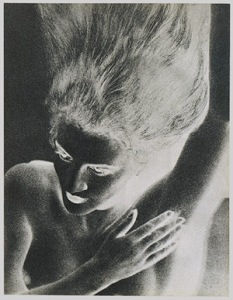Photography as a medium was realised within Clement Greenberg’s formula during the 1960s and 1970s. The refocusing of criteria for the use of photography by Conceptual artists discussed in Jeff Wall’s essay “Marks of Indifference: Aspects of Photography in, or as Conceptual Art.” Wall presents a thorough account of the redefining history of photography. Most importantly he states two important directions photography takes in order to transcend the pictorial: pictorial and the deskilling of photography respectively. The work of Richard Long, Bruce Nauman, Robert Smithson and Edward Ruscha will be referred to as examples. Traces of Conceptual art upon contemporary approaches will be discussed using Joachim Schmid’s work.
Photography had adapted the traditions of modernist painting and sculpture since the 1920s with Stieglitz and the Sucessionists. Elevating photography to a fine art was seen only viable by mimicking painting and sculpture.
Abandoning Pictorialism in the 20s, and influenced by the growth of mass communications, the avant-garde experiments led to an imitation of photojournalism. “Photojournalism… elaborated a new kind of picture, utilitarian in its determination by editorial assignment and novel in its seizure of the instantaneous, of the “news event” as it happened.” (1) The notion of the unique, unspoiled integrity of photography is evident in the work of Paul Strand, Walker Evans and Henri Cartier-Bresson. This mimicry of reportage and alignment with new culture industries, enabled photography to abandon the sensuous picture surface and contrived composition in favour of what Cartier-Bresson coined as, “the decisive moment.”
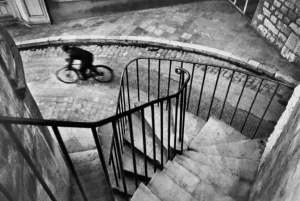 Henri Cartier-Bresson, The Var Department, Hyères, France, 1932.
Henri Cartier-Bresson, The Var Department, Hyères, France, 1932.
 Walker Evans, Portrait of Allie Mae Burroughs, 1936.
Walker Evans, Portrait of Allie Mae Burroughs, 1936.
 Paul Strand, The White Fence, Port Kent, New York, 1916.
Paul Strand, The White Fence, Port Kent, New York, 1916.
Jeff Wall states, “The art concept of photojournalism began to force photography into what appears to be a modernist dialectic. By divesting itself of the encumbrances and advantages inherited from older art forms, reportage pushed toward a discovery of qualities apparently intrinsic to the medium, qualities that must necessarily distinguish the medium from others, and through the self-examination of which it can emerge as a modernist art on a plane with the others.” (2)
During the 1940s and 1950s, photography receded back into the language of Modernist Pictorialism. Artists such as Ansel Adams and Edward Weston, were elevated to a heroic position. Adams trekked into the mountains, lugging large format cameras, risking life and limb in order to get the quintessential shot. the photographer this becomes revered as a genius for revealing the truths in the world. These photographers carefully considered compositions and the textural sensuousness of the picture surface.
Ansel Adams, The Tetons – Snake River, Grand Teton National Park, Wyoming, 1936.
 Edward Weston, Pepper No. 30, 1930.
Edward Weston, Pepper No. 30, 1930.
Painting and sculpture, through Abstract art had abandoned depiction, and Minimalism was refocusing issues regarding the validity of the art object. “In the process of developing alternative proposals for art “beyond” depiction, art had to reply to the suspicion that, without their depictive or representational function, art objects were art in name only, not in body, form, or function.” (3)
Finding other possibilities for photography was difficult compared with painting and sculpture. “It is in the physical nature of the medium to depict things.” (4) Conceptual art’s pursuit to transcend photography’s unmitigated picture making qualities sought to reconnect the medium to the real world.
Jeff Wall examines two important directions which emerged from this process; “The first involves the rethinking and “refunctioning” of reportage, the dominant types of photography as it existed at the beginning of the 1960s.” (5) “The second is related to the fist, and to a certain extent emerges from it. This is the issue of the deskilling and re-skilling of the artist in a context defined by the culture industry, and made controversial by aspects of Pop art.” (6)
In the sixties, younger artists bored with the traditions adopted by photography from painting and sculpture agitated the medium by returning to the fundamental “auto-critique” of art associated with the tradition of the avant-garde. (7)
The experimental work of Robert Smithson, Bruce Nauman and Richard Long did not derive as an antithesis of the aesthetic work of their precursors such as Adams and Weston, but rather stems from the concept of reportage as art-photography from the avant-garde of the 1920s. The criteria for art was refocused by the photo conceptualists. As Jeff Wall writes, firstly, it was legitimised by having transcended the boundaries of art, and secondly, the works produced are compelling in their superiority and yet invariably “… they seem to dissolve, abandon, or negate it.” (8)
The idiosyncrasies of reportage were altered with photo conceptualism. Reportage is directed inward and ridiculed by the artist. “The gesture of reportage is withdrawn from the social field and attached to a putative theatrical event.” (9) This was demonstrated in two ways according to Jeff Wall. Firstly, by using Long and Nauman as examples, the staged picture becomes affiliated with the new concepts of performance. Secondly, photojournalism and the photojournalist are ridiculed in the work of Smithson.
Long’s A 1/2 Mile Walk Sculpture, 1969, is an artistic gesture made specifically to be photographed. Long walks traces into the grass leaving a trace. The artist inverts the traditions of pictorial landscapes by positioning the walked track as the foreground motif. (10) The performance does not have meaning unless it is documented, thus the photograph becomes a substitute, a record for the event.
Richard Long, A Line Made by Walking, England, 1967.
Nauman photographs in the studio which in itself contradicts the Pictorialists. Failing to Levitate in the Studio, 1966 and Self-Portrait as Fountain, 1966-67/70 are examples of Nauman’s experimental art which changed the conditions of reportage from a documented event to a staged and theatrical kind of practice which was becoming known as Performance art. Studio photography and reportage are this deconstructed. The studio literally becomes the place of truth and reality when it is reinvented during this times becomes many things including a theatre, gallery and meeting place. (11) The studio is also ridiculed as a place where the performative artist as genius creates. Undoubtedly Nauman is referencing the high seriousness of the film documentary of Jackson Pollock, where the artist can be seen in deep concentration making paintings. Self-Portrait as Fountain, is Nauman’s homage to Marcel Duchamp’s fountain. Falling to Levitate in the Studio, parodies Cartier-Bresson’s “the decisive moment,” that split second that photography is known for. This work also questions the notion that photographs are “true.”
 Bruce Nauman, Failing to Levitate in the Studio, 1966.
Bruce Nauman, Failing to Levitate in the Studio, 1966.
Marcel Duchamp, Fountain 1917, replica 1964.
Bruce Nauman, Self portrait as a fountain, 1967.
“This integration or fusion of reportage and performance, its manneristic introversion, can be seen as an implicitly parodic critique of the concepts of art-photography.” (12) Photojournalism combines photography with writing. Smithson’s “Mock-travelogue” (13) A Tour of the Monuments of Passaic, New Jersey, 1967, describes the journey he took from the Port Authority in New York to Passaic County. His tour of the monuments in New Jersey begins at a bridge over the Passaic River. When he photographed it in the midday sun, he described it like, “photographing a photograph… The sun became a monstrous light bulb that projected a detached series of “stills”… When I walked on the bridge, it was as though I was walking on an enormous photograph…” (14) The narrative is quite entertaining in its parody of photojournalism. The works duality derives from the narrative which describes the making of the photographs, “one never knew which side of the mirror one was on.” (15)
Robert Smithson, “The Monuments of Passaic”, Artforum, December 1967.
Robert Smithson, The Bridge Monument Showing Wooden Sidewalks, 1967.
Photography was unable to abandon depiction entirely and thus could not reconcile to Greenberg’s reductivism. “Depiction is the only possible result of the camera system, and the kind of image formed by a lens is the only image possible in photography.” (16) With an influx of students and younger artists adopting the medium, the reduction in photography occurred with the elimination of pictorial and technical skill. By rejecting historical pictorial conventions adopted from painting, photography was now free to demonstrate Greenberg’s formula of “the effects [in each art] exclusive to itself.” (17) Joseph Beuy’s catch phrase, “every man is an artist,” (18) could now circulate within photo conceptual rhetoric with the advancement and democraticisation of photographic equipment like the Kodak Brownie.
“It became a subversive creative act for a talented and skilled artist to imitate a person of limited abilities. It was a new experience, one which ran counter to all accepted ideas and standards of art, and was one of the last gestures which could produce avant-gardist shock.” (19) In Some Los Angeles Apartments, 1965, Edward Ruscha’s performance as an ordinary person photographing the apartments in a banal way combines the, “brutalism of Pop art with the low-contrast monochromaticism of the most utilitarian and perfunctory photographs.” (20) “Ruscha has treated each image in a straightforward, deliberately artless manner and ignored the… artful effects of lighting, cropping, composition, or print quality.” (21) Depiction is this finally eliminated by reducing art to an intellectual concept.
 Edward Ruscha, Some Los Angeles Apartments, 1965.
Edward Ruscha, Some Los Angeles Apartments, 1965.
Many traces of Conceptual art are located in the work of contemporary artists such as Joachim Schmid. Since 1982, Schmid has collected over two hundred and fifty photographs discarded at photo booths and found on his travels. His Pictures from the Streets, are first, “visual artefacts and human documents,” (22) and secondly, the pictures, “aren’t really art at all and were never intended by their makers to be seen in a public exhibition.” (23) Schmid intervenes in the stories and life of the images he has found, they were created somewhere else by parties unknown. By not editing the selection according to aesthetic conventions Schmid, “instead provides an apparently unbiased, sociological sample of imagery lost or thrown away by its owners.” (24) Pictures from the Street, ultimately raises questions over Schmid’s artistic authorship. The work operates on many levels, it comments on the fetishisation of photography and visually the photographs are fascinating in regard to the mystery they possess and questions they pose in the mind of the viewer.
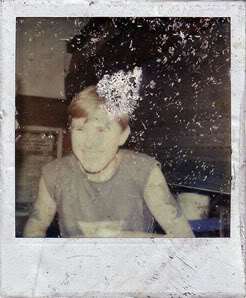 Joachim Schmid, No.37, Berlin, August 1987.
Joachim Schmid, No.37, Berlin, August 1987.
Joachim Schmid, No.83, Berlin, July 1990.
Joachim Schmid, No.830, Madrid, February 2004.
A video of Joachim Schmid, an artist who is obsessed with finding images rather than making them.
By dismissing Stieglitz in the post-Pictorialist phase, a shift in style from the painterly to photography’s inherent directness and immediacy positions the medium within mass culture. The validity of reportage was precisely the kind of art concept photography sought to revolutionise the picture. After a mild lapse in the 1940s and 50s, Conceptual artists turned towards reviving photography’s inherent qualities according to Greenberg’s theories, photography turned to reportage. Unable to deny itself its mechanical nature based on the lens, depiction is transcended by reduction of photography to an intellectual concept.
References
1. J. Wall, “Marks of Indifference: Aspects of Photography in, or as, Conceptual Art” in Goldstein, A. and Rorimer, A. (eds.). Reconsidering the Object of Art: 1965-1975, Los Angeles, Cambridge (Mass.) and London, 1995, p. 249.
2. ibid.
3. ibid., p. 247.
4. ibid., p. 247-248.
5. ibid., p. 248.
6. ibid.
7. ibid., p. 247.
8. ibid., p. 252.
9. ibid., p. 253.
10. ibid., p. 254.
11. ibid.
12. ibid.
13. ibid., p. 255.
14. R. Smithson, “A Tour of the Monuments of Passaic, New Jersey” in Wallis, B. (ed.). Blasted Allegories: An Anthology of Writing by Contemporary Artists, Cambridge, Mass: MIT Press, 1987, p. 75.
15. Wall, op. cit., p. 255.
16. ibid., p. 260.
17. ibid.
18. ibid., p. 263.
19. ibid., p. 265.
20. ibid.
21. A. Rorimer, New Art in the 60s and 70s Redefining Reality, Thames & Hudson, London, 2001, p. 114.
22. John S. Weber, “Joachim Schmid-Anti_Auteur, Photo-Flaneur” in Schmid J. Bilder von der Strasse/Pictures from the Street, Berlin, 1994, p. 11.
23. ibid.
24. ibid., p. 12.
Images
Henri Cartier-Bresson, The Var Department, Hyères, France, 1932. http://www.magnumphotos.com/C.aspx?VP3=SearchResult&ALID=29YL53KGUTK
Walker Evans, Portrait of Allie Mae Burroughs, 1936. http://en.wikipedia.org/wiki/Walker_Evans
Paul Strand, The White Fence, Port Kent, New York, 1916. http://collections.vam.ac.uk/item/O93493/the-white-fence-port-kent-photograph-strand-paul/
Ansel Adams, The Tetons – Snake River, Grand Teton National Park, Wyoming, 1936. http://en.wikipedia.org/wiki/Ansel_Adams
Edward Weston, Pepper No. 30, 1930. http://en.wikipedia.org/wiki/Edward_Weston
Richard Long, A Line Made by Walking, England, 1967. http://www.richardlong.org/Sculptures/2011sculptures/linewalking.html
Bruce Nauman, Failing to Levitate in the Studio, 1966. http://cabinetmagazine.org/issues/32/schuster.php
Marcel Duchamp, Fountain 1917, replica 1964. http://www.tate.org.uk/art/artworks/duchamp-fountain-t07573
Bruce Nauman, Self portrait as a fountain, 1967. http://cs.nga.gov.au/Detail-LRG.cfm?IRN=115602
Robert Smithson, “The Monuments of Passaic”, Artforum, December 1967. http://openstacks.tumblr.com/post/76365278353/robert-smithson-the-monuments-of
Robert Smithson, The Bridge Monument Showing Wooden Sidewalks, 1967. http://absolumentmoderne.tumblr.com/post/26841593431/robert-smithson-monuments-of-passaic-artforum
Edward Ruscha, Some Los Angeles Apartments, 1965. http://daskunstbuch.at/2013/02/11/kunstlerbuch-artists-book-ed-ruscha-some-los-angeles-apartments-1965/
Edward Ruscha, a page from the book. http://mmk-frankfurt.de/de/sammlung/werkdetailseite/?werk=1991%2F504
Joachim Schmid, No.37, Berlin, August 1987. https://schmid.wordpress.com/works/1982-bilder-von-der-strase/
Joachim Schmid, No.83, Berlin, July 1990. https://schmid.wordpress.com/works/1982-bilder-von-der-strase/
Joachim Schmid, No.830, Madrid, February 2004. https://schmid.wordpress.com/works/1982-bilder-von-der-strase/
Joachim Schmid video http://petapixel.com/2014/09/24/joachim-schmid-artist-finds-publishes-peoples-photos/




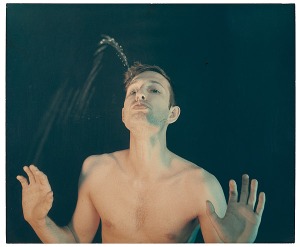




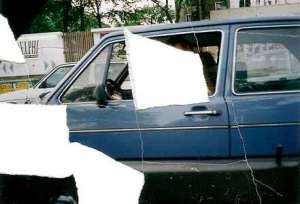
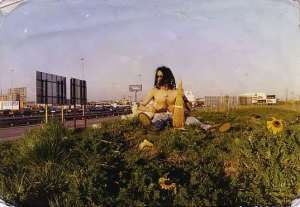



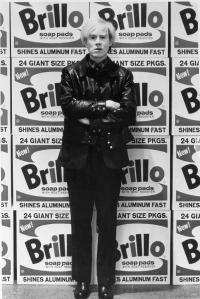
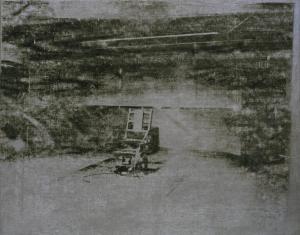

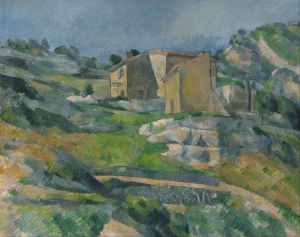

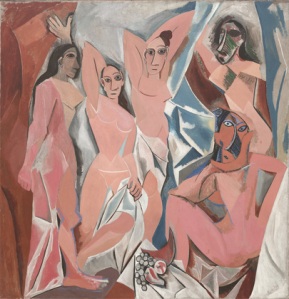


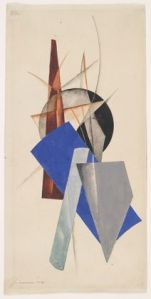



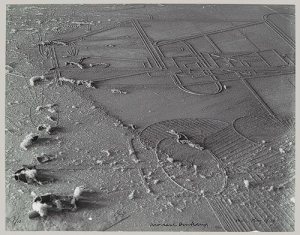
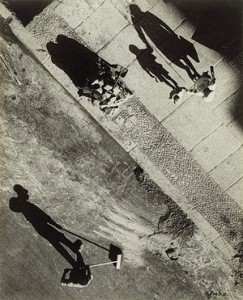 Otto Umbehr, Mystery of the Street, 1928.
Otto Umbehr, Mystery of the Street, 1928.
